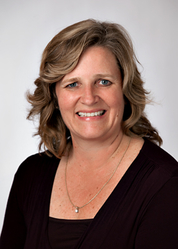For Dr. Mercie Digangi, a pediatrician at Kaiser Southern California in Downey, CA, ACEs screening provided a crystal clear before-and-after in how she changed treatment plans for her pediatric patients, she explained to attendees of a December 2 webinar organized by the National Pediatric Practice Community on ACEs (NPPC) and cosponsored by ACEs Connection.

One case that turned ACEs screening into a never-go-back moment for her was a three-year-old who was speech-delayed. “He basically had three or four words in his vocabulary,” she said. “Before I was screening for ACEs (adverse childhood experiences), I would have said, ‘Let’s go to speech therapy, maybe screen for autism and go from there.’”
But after screening for the boy’s ACEs, Digangi discovered that he had an ACE score of 4 (ACEs Science 101, Got your ACE score?). The mother also told Digangi that she and her toddler had left a tumultuous home life with the boy’s father and an uncle. “The father had significant mental illness and was screaming, hallucinating and punching walls for the first two years of the child’s life,” said Digangi. There was domestic violence occurring in the house, and the uncle was using illegal drugs.
“I still sent the child for speech therapy and autism evaluations. But with the knowledge that there were significant ACEs in the house from birth that were affecting this child’s development, I made a referral for trauma-focused therapy as well. And I wouldn’t have initially done that without this screener,” said Digangi. “It happened in the first week of screening and really opened my eyes to how important screening is in our clinics.”
Kaiser Southern California, which has screened more than 6,000 pediatric patients for ACEs in the last 18 months, is one of six pilot sites participating in the first cohort of the National Pediatric Practice Community on ACEs, a program of the Center for Youth Wellness (CYW). The other pilot sites include: La Clinica de la Raza in Oakland, CA; Marin Community Clinic with sites in San Rafael and Novato, CA; the Santa Barbara Neighborhood Clinics in Santa Barbara, CA; a clinic at Zuckerberg General Hospital in San Francisco, CA; and the Institute for Family Health in Harlem, NY.
The webinar, entitled “NPPC’s Pilot Site Case Studies: Lessons Learned from ACEs Screening Implementation” also included Karissa Luckett, a registered nurse and social worker who serves as a consultant for the NPPC. She provided monthly coaching to the clinics that included helping them overcome barriers in workflow, developing resources and thinking through how they’re going to set up their electronic health records to capture the data from the ACEs screening about their goals. One of the greatest lessons learned, Luckett said, was that practices need to begin building out their electronic health record systems early on in the transition to screening. (See the attached document below of the webinar slides.)
The monthly calls also helped reveal barriers and allowed the pilot sites to work with Luckett on how to trouble-shoot them. For instance, she said that if many patients are refusing to fill out an ACEs questionnaire, it could signal that additional training is needed among staff who are giving the ACEs screener to patients.
Other lessons learned from the pilot sites include:
- Ensure that organizational goals and goals of ACEs screening align
- Get broad level buy-in from all involved from front line staff to leaders
- Provide training to all providers and staff involved in ACEs screening to promote confidence and effective implementation.
The Santa Barbara Neighborhood Clinics implemented its ACEs screening of parents and children in 2018. It also brought in CALM (Child Abuse Listening Meditation), a local child abuse prevention and treatment organization, as well as community navigators to help families find community organizations that will provide the support they need, said pediatrician Dr. Andria Ruth. (Read more about the Santa Barbara Neighborhood Clinics in this ACEs Connection story.)

While they are still collecting data that identifies the impact of ACEs screening and interventions, the Santa Barbara clinic has learned from patients how the process has worked for them. “We have had qualitative interviews in which they said that they appreciate being asked about ACEs, and appreciate the parenting skills they’ve learned — how to interact with their child, and play with their child in a positive way,” said Ruth. “They also said that those skills help with their levels of stress, and they appreciate that they can connect with resources they need right at the clinic.”
Leena Singh, NPPC’s program director, presented results from the NPPC pilot sites:
- All six sites successfully implemented ACEs screening
- Sites screened a total of 1,900 children under the age of 18
- All sites screened at least half of eligible patients
- Positive screens ranged from 7% to 58%
- All sites made improvement to data tracking
- Half of the sites strengthened referral networks
- 50% expanded screening to other sites within their organization.
For more information about this webinar or about NPPC, please contact Molly Peterson at: mpeterson@centerforyouthwellness.org. You can join NPPC here. If you’re not currently a member of ACEs Connection’s please join here, and sign up for the ACEs in Pediatrics community to talk ACEs and resilience and share strategies with peers.



Comments (0)